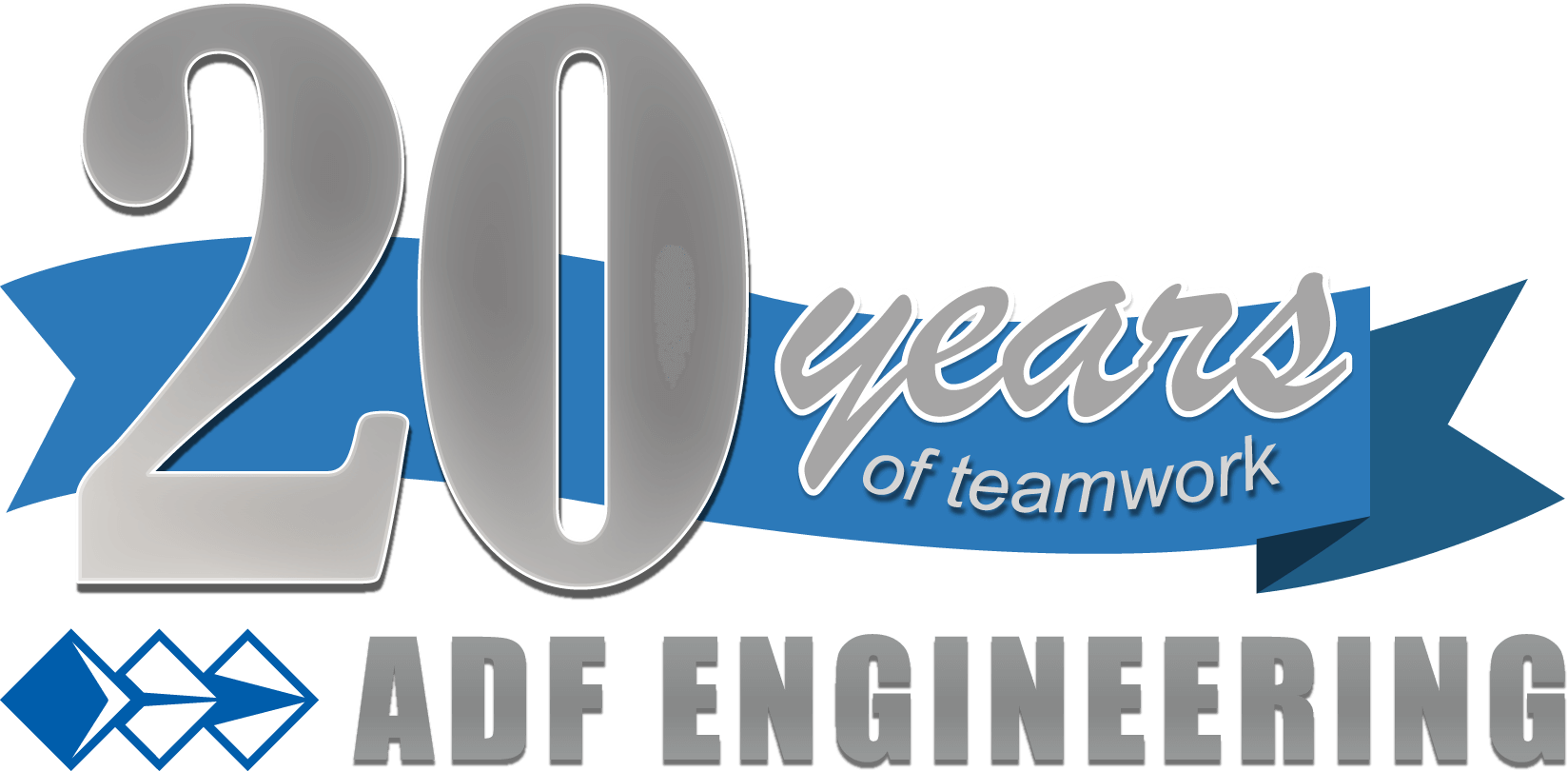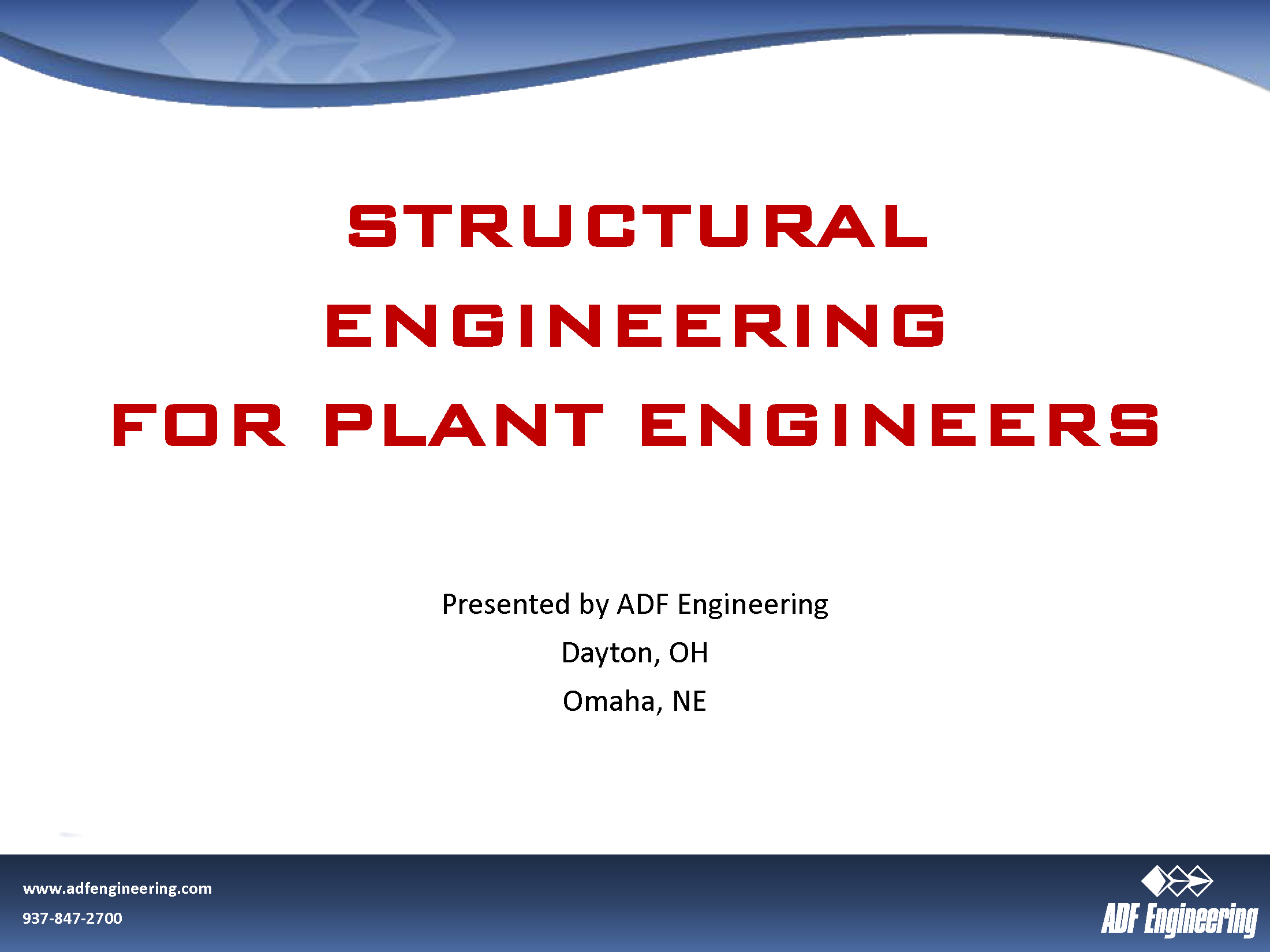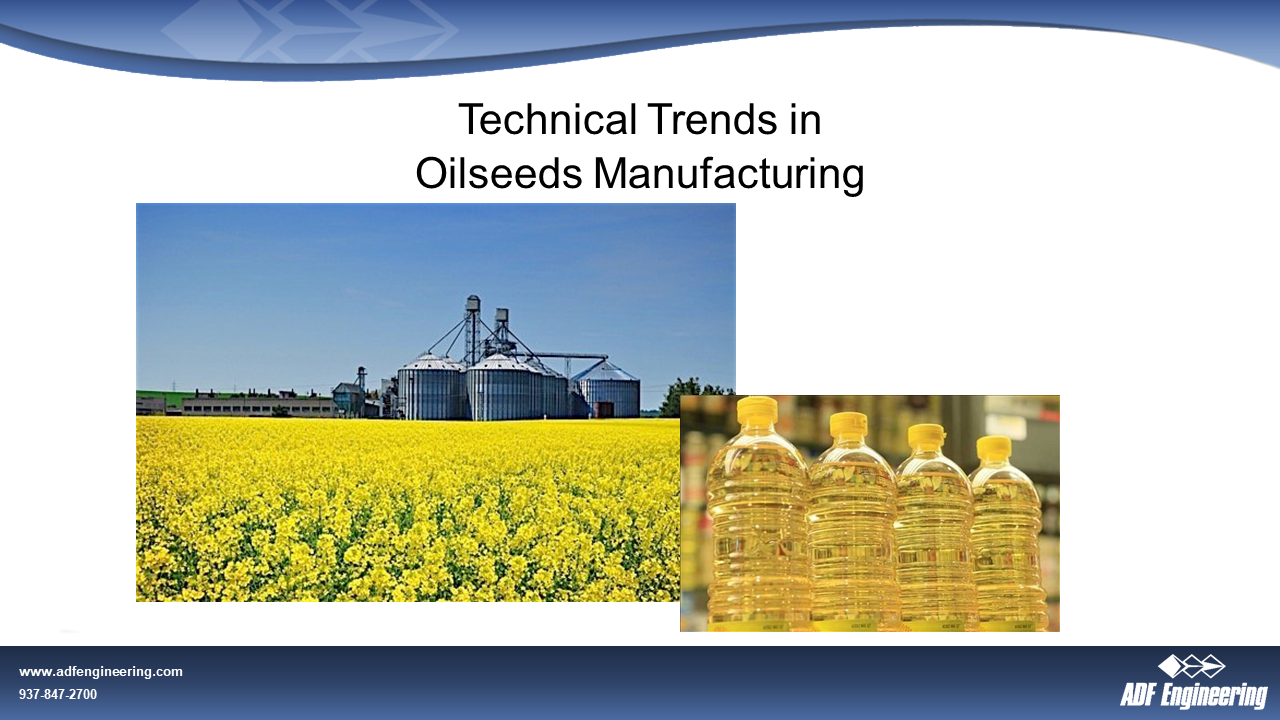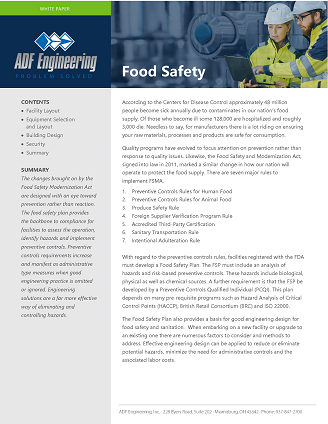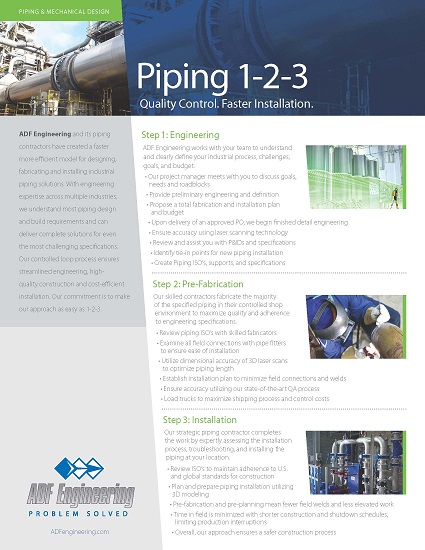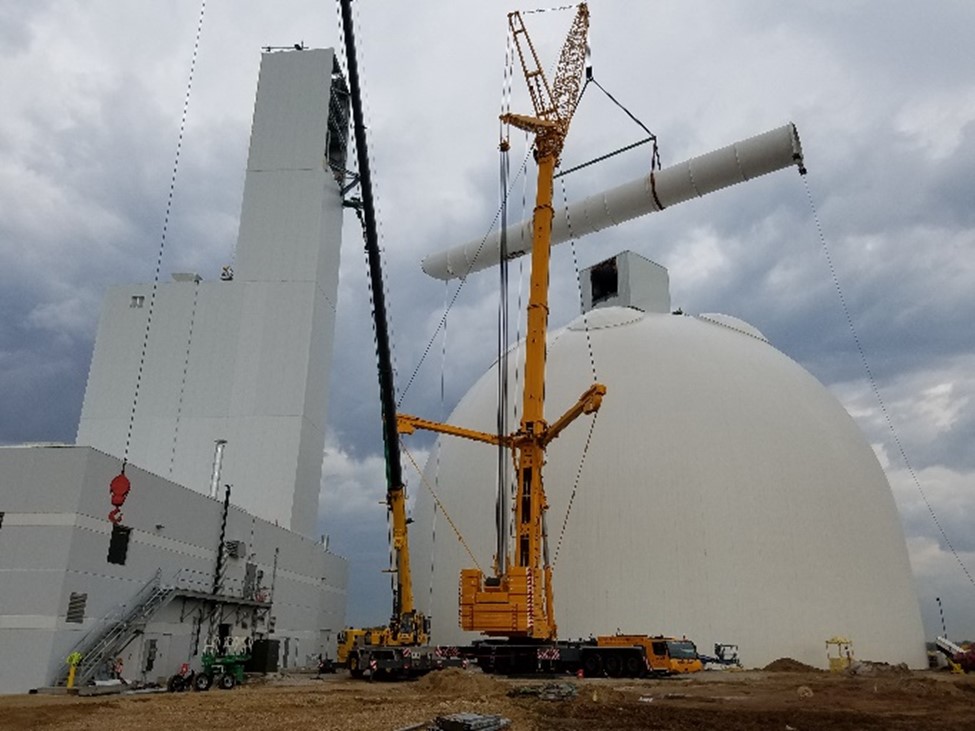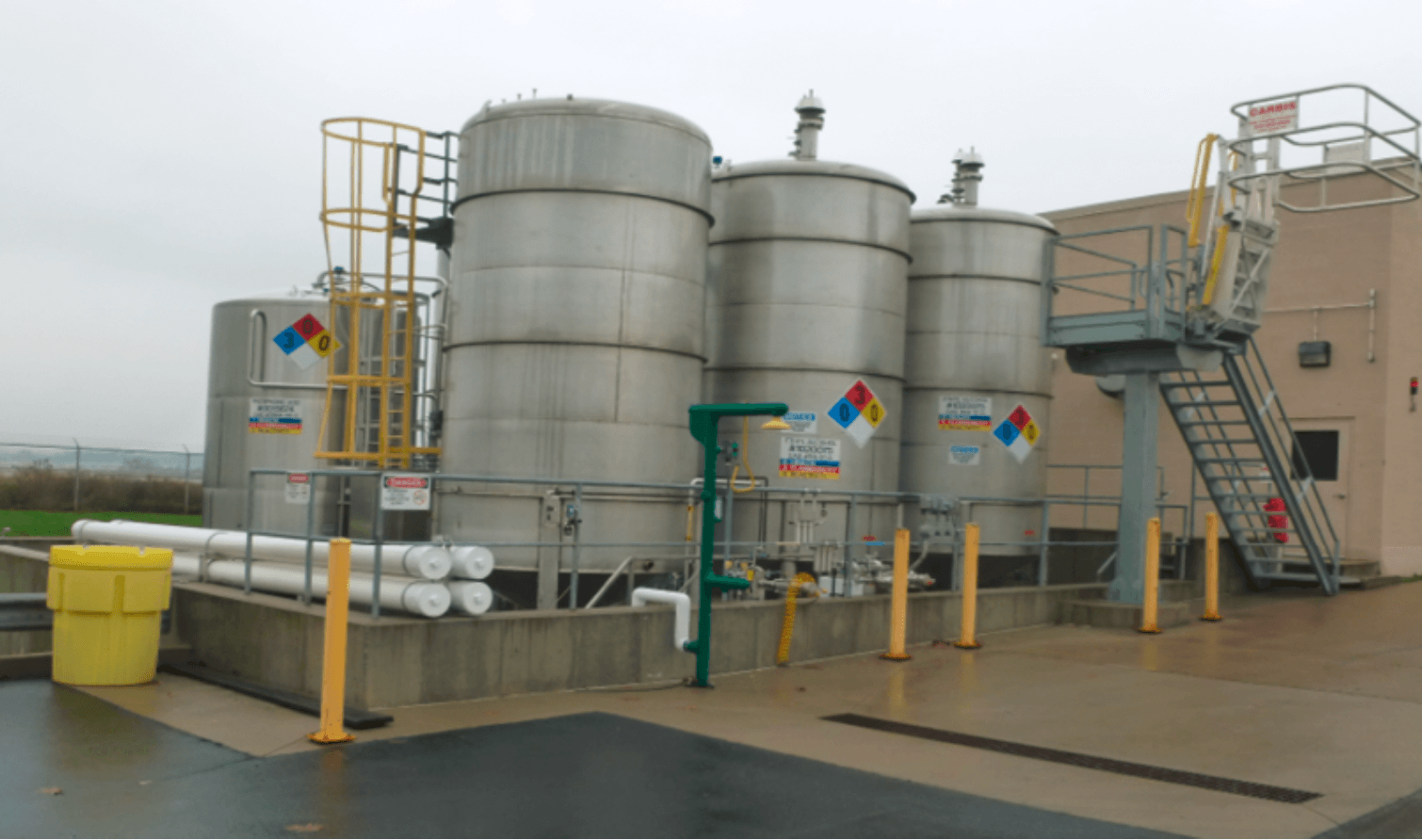AOCS 2020 Soybean 360 ADF Trends in Oilseeds Manufacturing
Click the image to download the PowerPoint.
ADF Food Safety
The changes brought on by the Food Safety Modernization Act are designed with an eye toward prevention rather than reaction. The food safety plan provides the backbone to compliance for facilities to assess the operation, identify hazards and implement preventive controls. Preventive controls requirements increase and manifest as administrative type measures when good engineering practice is omitted or ignored. Engineering solutions are a far more effective way of eliminating and controlling hazards. Download ADF Food Safety White Paper
Tubular Conveyor Gallery
CLIENT: Bulk Material Storage and Transload Facility PROJECT: Tubular Conveyor Gallery consisting of thin wall steel shell BACKGROUND: The client approached ADF Engineering to design a bulk material storage and transloading facility in the Chicago Area. As part of the project, our Structural engineers were tasked to design a conveyor bridge to transfer the product from the receiving tower to the dome type storage silo. The conveyor support bridge had several challenges. CHALLENGES: Had to be free spanning (134’) because intermediate supports would have interfered with emergency vehicle traffic. Despite being in Chicago area, it needed to be completely sealed…
Q&A: Alex Fishman answers your top questions about shop drawings
Shop drawings are a critical part of any project, but are often surrounded by confusion and misunderstanding that leads to disputes and unique legal challenges. In terms of risk management, it’s essential that these drawings provide a strict flow of information between the contractor’s means and methods, and the construction documents prepared by the engineer. In this Q&A session, ADF Engineering President Alex Fishman answers some of your top questions about shop drawings. 1. Your design team creates drawings as part of your contract for the project design. So, what is the difference between IFC (issue for construction) drawings…
Performing Risk Assessments: Dust and Process Safety
Background of Safety Risk Assessments In 1992, OSHA launched Process Safety Management (PSM) to address industries that handle highly hazardous chemicals, under OSHA Standard 29CFR 1910.119. This standard seems straightforward but was revolutionary in its impact on process safety improvements across multiple industries where flammable, combustible and toxic chemicals are used in sufficient quantities to pose a hazard to personnel or public safety. One of the fourteen elements of PSM that has been an indispensable tool in managing chemical hazards is the Process Hazard Analysis (PHA). A PHA is a systematic way to identify the hazards and quantify the risks…
